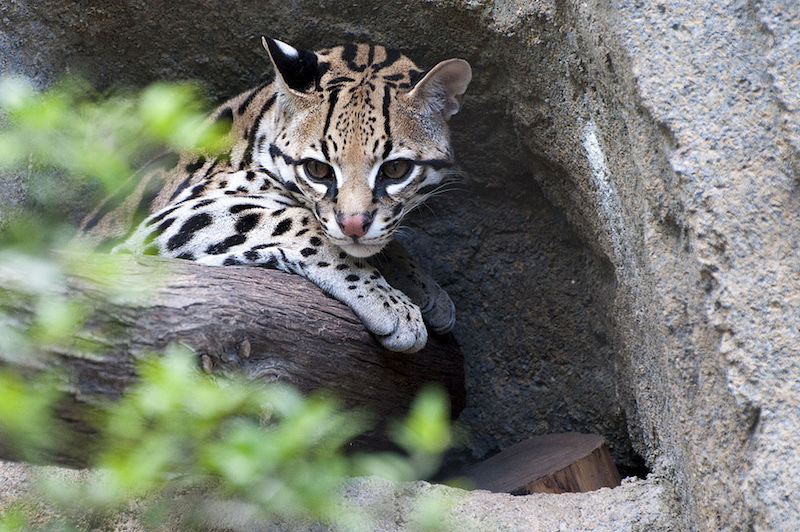The armadillo, the mockingbird, the horned lizard – all critters with a special place in the hearts of Texans. Not so much the ocelot and maybe that’s why this cat is so hard to spot anymore.
In Texas, they’re said to be down to the double digits. But federal conservationists have a plan to bring them back.
Hilary Swarts, an ocelot biologist at Laguna Atascosa National Wildlife Refuge, says solutions to revitalize the state’s ocelot population will involve with the U.S Department of Transportation and Fish and Wildlife Services in Mexico.
Ocelot protection requires habitat restoration to counter human development, Swarts says, which threatens their native environments of Texas, Eastern Arkansas and Louisiana.
“As humans expanded more into the Valley,” she says, “more of that habitat was removed and as that habitat fell, so too did the ocelot population.”
Laguna Atascosa Refuge is working to reduce ocelot deaths from vehicle collisions and bring ocelots from Mexico to strengthen their numbers in Texas.
“[Mexican ocelots] will bring new genetics which would bring a boost or injection of diversity into the population,” she says.
Only 15 ocelots live on Laguna’s 100,000-acre refuge. Intrigue about this species is one of the reasons she became interested in conservation.
“I have worked three years here and I’ve never seen one, except in a trap,” Swarts says. “Some of the interest in it is the challenge to try and figure out what they’re doing.”
In the past, ocelots were viewed as a nuisance in Mexico, Central and South America but Swanks says she hasn’t heard that in Texas.
“People are proud that this animal lives here,” she says, “and a lot of landowners right around the refuge have made active steps towards helping us with their conservation.”
Post by Betsy Joles.
















